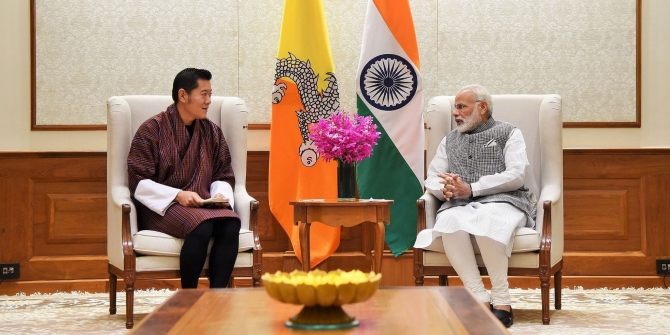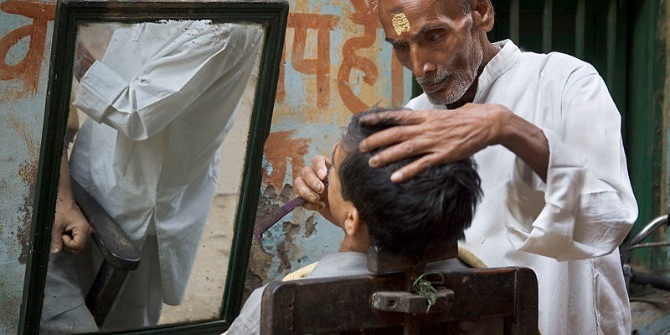As each South Asian country struggles with a fresh water crisis, Bilal Ahmad Pandow (South Asian Voluntary Association of Environmentalists) argues why a new water data sharing platform created by the United Nations, Google, and the European Commission could help countries around the region provide fresh, clean water to their citizens while helping the region to avoid future conflicts.
Given diminishing resources, an increase the size of the region’s population, coupled with climate change, the region is heading towards possible conflicts based over disagreements on water. Despite Article Six in the Sustainable Development Goals (SDG) stating that water for all will be a reality by 2030, the region is heading towards of crisis of reliably clean water in the near future. Data sharing, hydro-diplomacy and the inclusion of multilateral institutions however could make water sharing a means to prevent such outbreaks of conflict in the region.
The region’s water crisis
The water crisis has engulfed the entire region: women and children walk miles each day in search for water in Pakistan’s financial capital Karachi; in India, according to a 2018 Water Aid report, around 163 million people in India lack access to clean water close to their home with 70 percent of the country’s water is contaminated. The situation in Bangladesh is no better: the demand for water in the Dhaka is 2.2 billion litres a day, while the production is 1.9 billion litres a day. In Bhutan and Nepal, South Asia’s per capita water availability is already below the world average. The region could in the near future face widespread water scarcity— less than 1,000 cubic meters available per person.
Warning bells too have been sounded by Down To Earth, a magazine published by the Centre for Science and Environment. In the not too distant future, Bengaluru will see Cape Town-like water crisis, as the number of waterbodies in Bengaluru has reduced by 79 percent due to unplanned urbanization and encroachment, while built-up areas have increased from 8 percent in 1973 to 77 percent today.
Despite common concerns over the inevitable threat of water scarcity across South Asia, countries have found it difficult to collectively curate effective agreements over efficient water resource management within international river basins. The absence of guiding frameworks plagues hydro-diplomatic relationships of these countries to the extent where some have predicted that water will be one of the critical drivers of peace and stability in South Asia in the second decade of the 21st century.
Indus Water Treaty
Though are some successful joint mechanisms are in existence, such as India-Pakistan Indus Waters Treaty of 1960, both countries have repeatedly accused each other of violating the 1960s Indus Waters Treaty that ensures shared management of the six rivers crossing between the two neighbours who have fought three major wars in the past 71 years.
Yet fast-growing populations and increasing demand for hydropower and irrigation in each country means the Indus is coming under intense pressure. The National Aeronautics and Space Administration in one of its reports mentions that the Indus Basin aquifer of northwestern India and Pakistan is the second-most overstressed basin, another over-stressed basin is between India-Bangladesh Ganges Water Sharing Treaty of 1996. Long-standing and seemingly intractable regional disputes have put a strain on these agreements.
Researchers at the East West Institute have suggested steps should be taken towards enabling effective hydro-political regimes to take root in South Asia in which involved countries should endorse the United Nations Watercourses Convention (UNWC). This will ensure, sharing of transboundary hydrological data and water bodies would be managed through the Integrated River Basin Management process.
The role of the UN
The recent partnership between the UN Environment, Google, and the European Commission, which aims to ‘leave no one behind’ on World Water Day has launched a groundbreaking data platform that will track the world’s water bodies—and a country’s progress in achieving Article Six of the Sustainable Development Goals. It is this partnership that could be of vital importance for South Asian countries to manage their water shortages and help depoliticise the water crisis between their neighbours.
Hydro-diplomats have a role to play along with the multilateral institutions but local and international NGOs also have a key role to play in bring all stakeholders of these countries together for cooperation on the most precious resource of all: water.
This article gives the views of the author, and not the position of the South Asia @ LSE blog, nor of the London School of Economics. Please read our comments policy before posting. Photo credit: Linus Nylund, Unsplash.
Bilal Ahmad Pandow, is a co-founder of South Asian Voluntary Association of Environmentalists, a developmental organisation working for environment and people of South Asia, info@savae.net He tweets @savae8








Leaders of South Asian region should take a serious note of this article and act in accordance.